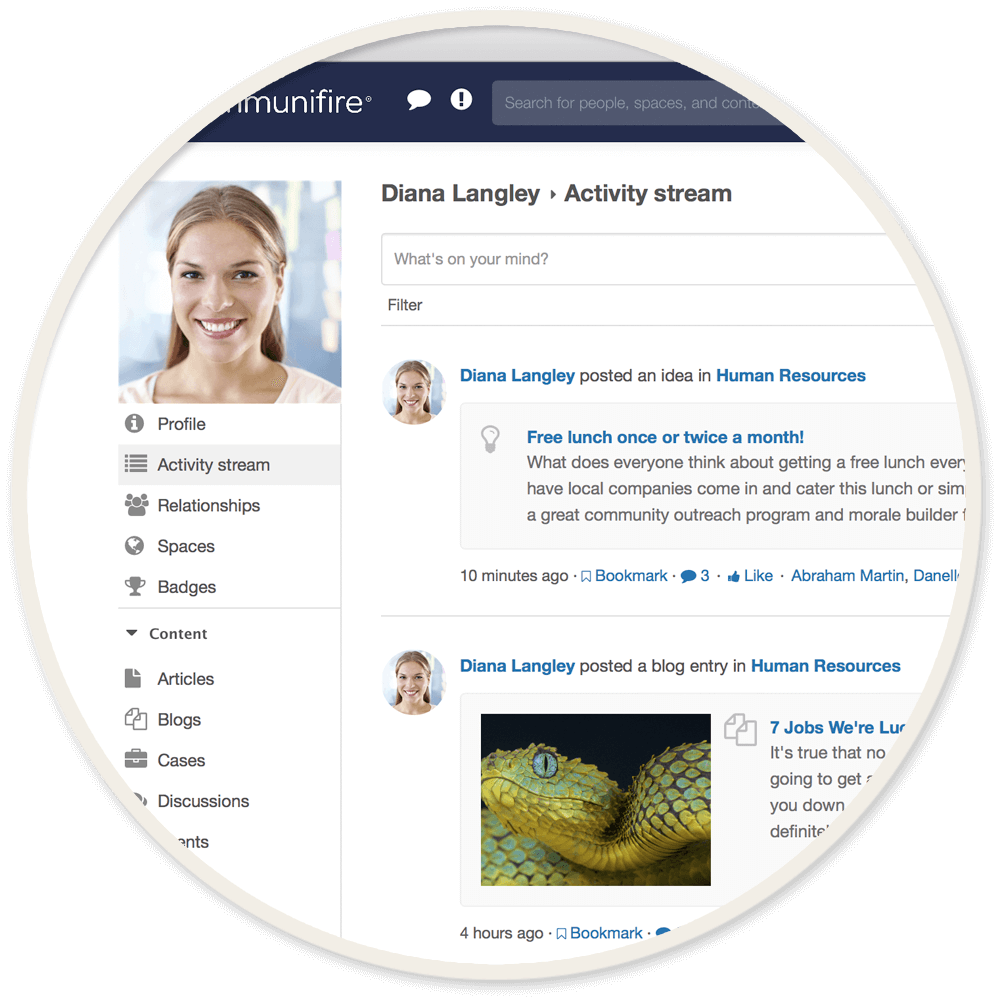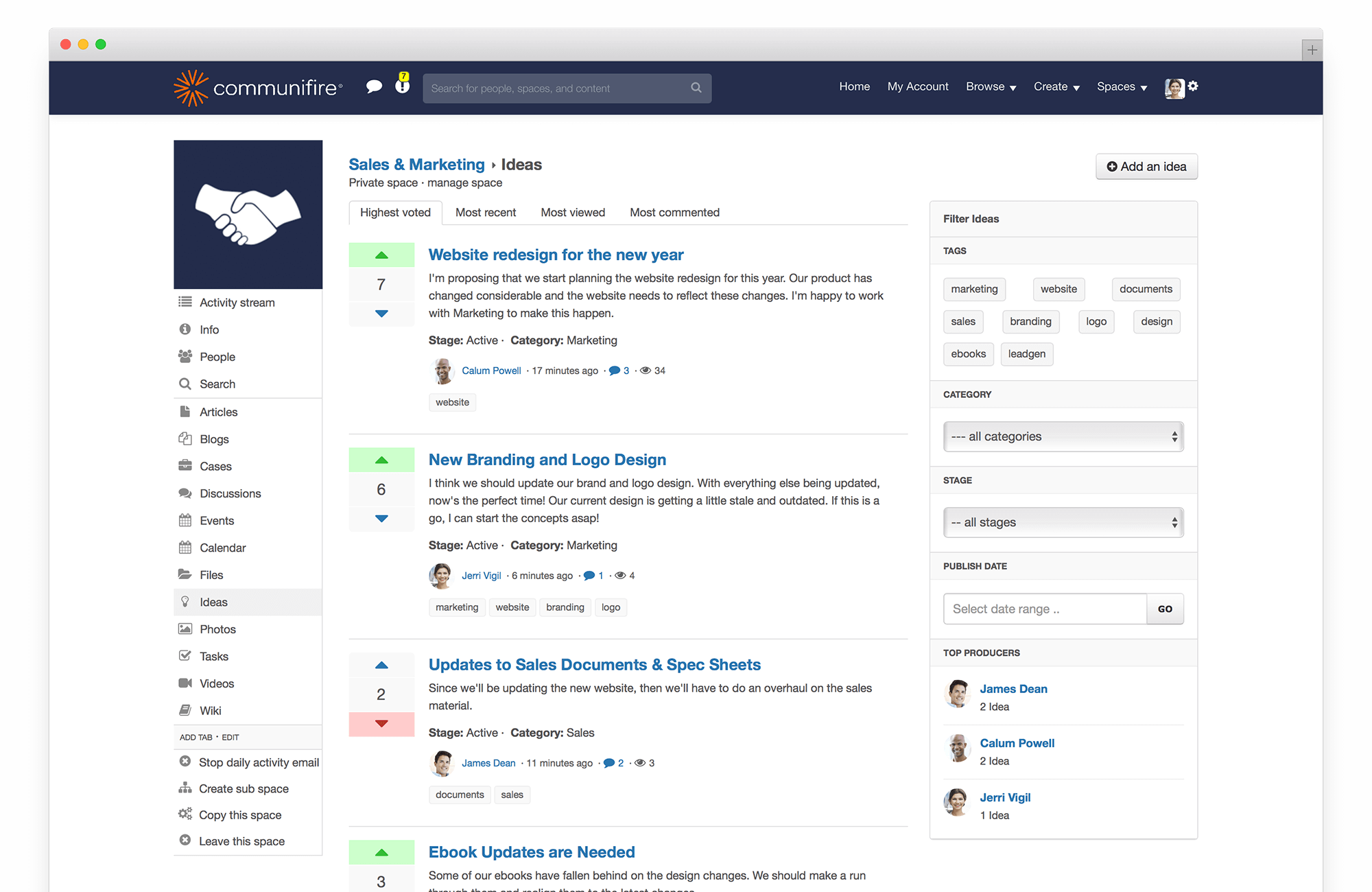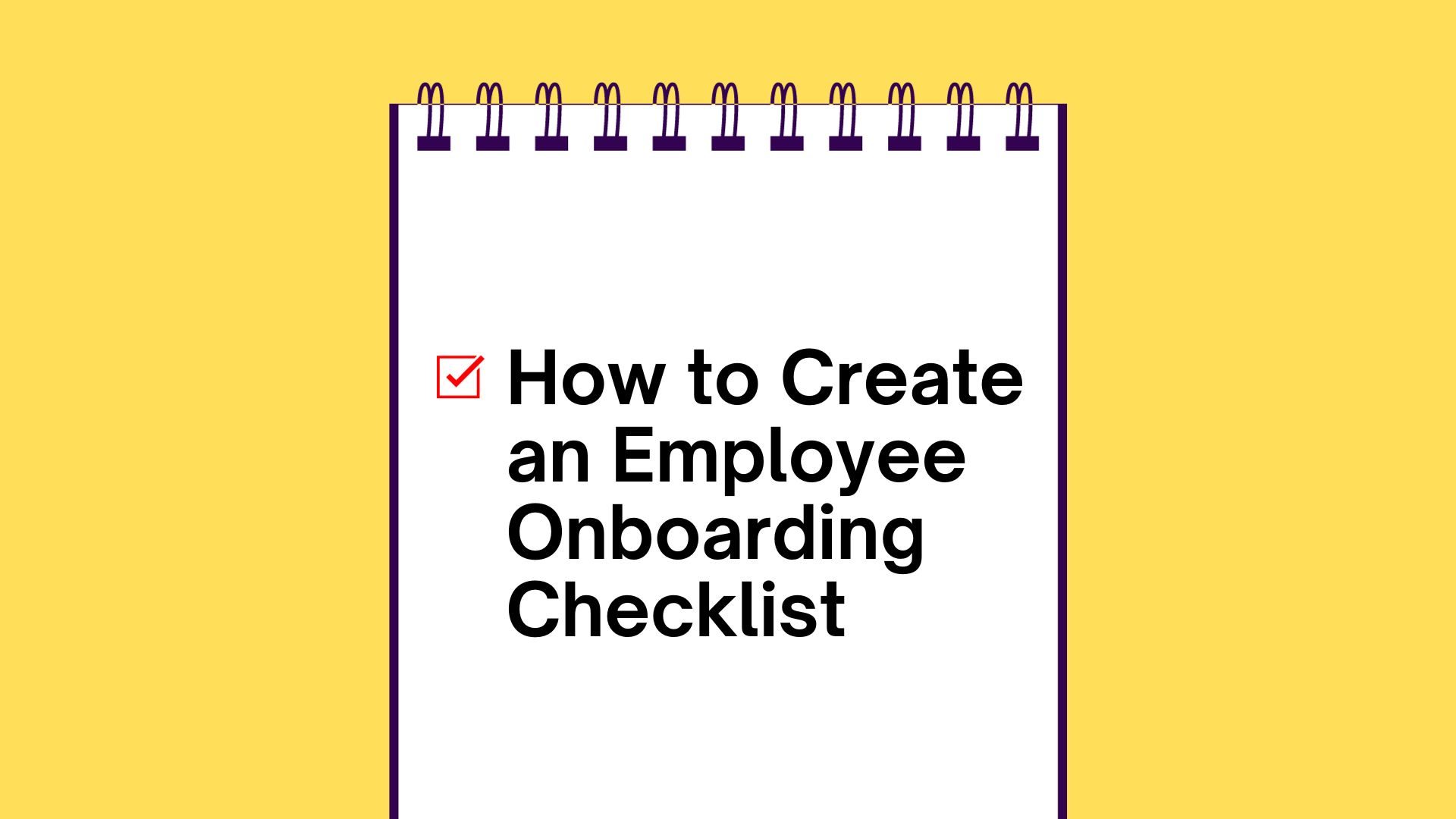Employee intranet platforms work extremely well for enhancing internal communication:
- management ? employees
- employees ? management
- employees ? employees
They also improve employee engagement and company-wide collaboration for employees in the same building or working remotely.
But, did you also know that employee intranet software can help you identify your staff’s strengths and weaknesses?
This insight is immensely helpful when it comes to organizing team assignments, performance reviews, and determining promotions. Because of the inherent transparency and interaction that employee intranets provide, they are a great window into the interests, skills, personalities and likes or dislikes of team members. It happens naturally—without the “canned” answers that you frequently get when you ask employees about their strengths and weaknesses.
So, forget the online surveys, self-assessment tools, and complex psychological evaluations. Here are 6 ways to tap into your existing employee intranet to gain genuine insight into who’s good at what, and where some development opportunities exist.
Table of Contents
1. Examine employee profiles.
Employee profiles are an opportunity for employees to tell a little about themselves, share insight about their likes/dislikes, areas of expertise, background, and personal and professional interests. In addition, you can get a glimpse into their network, like who they report to and how they fit into the organization.
Culling employee profiles can be helpful for welcoming new employees during the onboarding process and establishing a baseline for their level of engagement and adoption of the platform from their first day on the job.
Requiring new hires to complete a thorough profile immediately engages them in the platform, allowing you to identify areas where orientation/educational programs may be needed, and monitor their progress over time.
2. Check out their activity.
Take a look at the content employees are contributing to your intranet community. Are they asking and answering questions? Sharing information? Encouraging other team members? By looking at the types of activity they engage in, it can help you identify experts in your organization and discover opportunities for training or improvement.
For example, if you observe a couple key individuals who are taking charge and answering questions, these are your team leaders! Reinforce this behavior with recognition so you motivate your employees to do their best. These may also be the people you want to move into leadership roles.
3. Use gamification to unlock potential.
Gamifying your employee intranet with rewards, recognitions and leaderboards can uncover talents, passions and skills among employees. Rewarding employees for knowledge sharing is a powerful motivator that encourages them to share even more.
FedEx’s gamification in the workplace shifted their culture to an environment that rewarded and encouraged people to share knowledge with each other. When employees wrote a blog post, answered questions, or participated in other discussions, they earned badges and points. Eventually, employees climbed up the latter to become a recognized expert. Because of gamification, FedEx was able to creatively tap into 40 years worth of knowledge.
4. Silence speaks volumes—but not what you might expect.
A lot of employers will jump to the conclusion that employees who are not very active on the employee intranet are disengaged, poor communicators, technology averse, or not “team players”. But this isn’t necessarily true.
In roughly any social network—even extremely popular and public ones like Facebook—the breakdown of user activity typically is that only 1% are active content creators and less than 10% are commenters who take part in, but don’t start, the conversation. The remaining 90% are lurkers – those who prefer to hear/read what their peers have to say, but don’t participate. This doesn’t necessarily mean they’re anti-social. In fact, that may be farthest from the truth. Perhaps they much prefer face-to-face interaction and conversation—and that’s great, too. The bottom line, while lack of participation on the employee intranet might at first seem to indicate a weakness, it could actually point to a strength in this group of employees who are much better at face-to-face interaction.
5. You’ll catch more flies with honey than vinegar.
Employees who are encouraging, offer positive reinforcement, constructive criticism, and recognize and praise their peers for achievements are incredibly valuable to an organization. Those who are cynical, degrading, difficult and negative create a caustic atmosphere and it only takes one or two of these bad seeds to undermine the entire culture of an organization.
Employee intranets provide an opportunity for staff members to show their true colors in full, transparent view of everyone else. That means that if you’ve been hearing rumblings of a Negative Ned or an office bully, monitoring his or her activity on the employee intranet can give you the insight—and firsthand evidence—you need to take appropriate action.
On the other hand, employees who are cheerleaders for their peers might be excellent candidates for management roles, as they clearly understand how best to motivate their team members.
6. Get a glimpse into their creativity.
The most innovative and successful organizations know that good ideas don’t always have to come from the R&D team. Employees in any department, at any level, may have fantastic ideas for solving problems and developing solutions.
Social intranets can provide an “ideation station” that gives all employees a platform to offer ideas, discuss them with colleagues, and even have them reviewed by management.
For example, the biotech company KeyGene encourages intranet ideation, where designated catalysts review and select the most promising ideas and invite support from others. This gives management a clear indication of employees’ creativity, problem-solving ability and willingness to put their ideas “out there” for criticism and/or consideration.
In Conclusion
When considering an employee intranet, most companies look primarily at increases in engagement, communication, collaboration, and productivity as key benefits, mostly because these are often the easiest to quantify, which naturally makes them the most obvious and sought-after. While these are certainly worthy of justifying the investment, using your employee intranet to glean insights into your employees’ strengths and weaknesses can further increase your ROI, allowing you to get even more value out of something that already makes sense.














